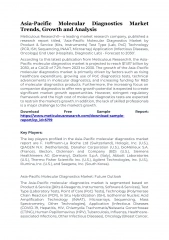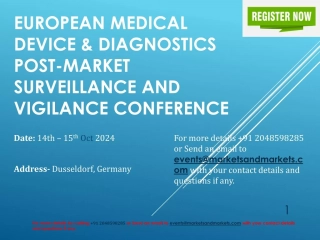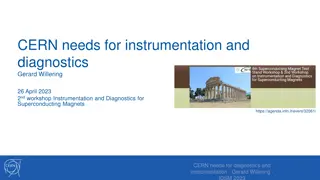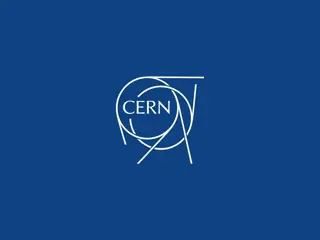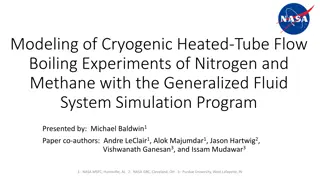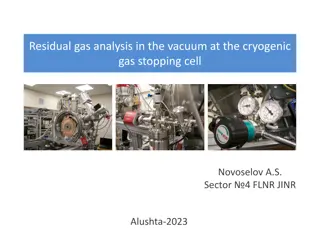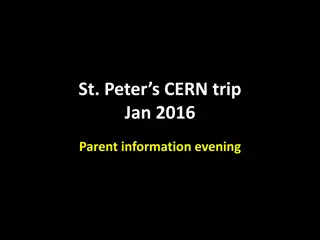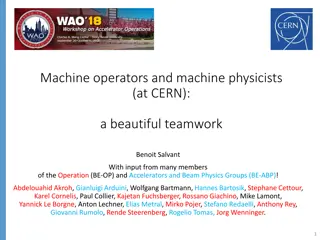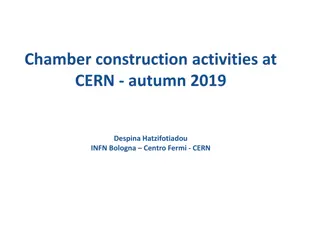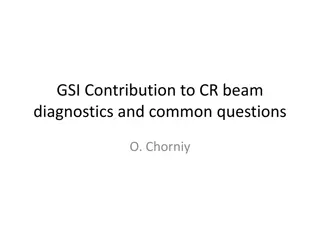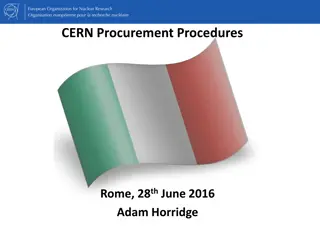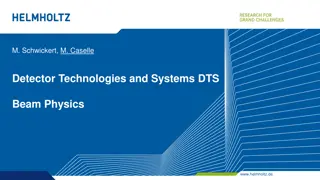Implementation of Preventive Diagnostics for CERN Cryogenic System
In this study, preventive diagnostics measures for the CERN Cryogenic System are discussed, focusing on turbine-related issues. The methodology involves using residues as key variables to detect deviations in system behavior early on. By examining specific turbine parameters, such as speed, temperature, pressure, and mass flow rate, potential faults can be identified promptly to reduce recovery time after system failures.
Download Presentation

Please find below an Image/Link to download the presentation.
The content on the website is provided AS IS for your information and personal use only. It may not be sold, licensed, or shared on other websites without obtaining consent from the author.If you encounter any issues during the download, it is possible that the publisher has removed the file from their server.
You are allowed to download the files provided on this website for personal or commercial use, subject to the condition that they are used lawfully. All files are the property of their respective owners.
The content on the website is provided AS IS for your information and personal use only. It may not be sold, licensed, or shared on other websites without obtaining consent from the author.
E N D
Presentation Transcript
Implementation of Preventive Diagnostics Measures for the CERN Cryogenic System Roberta Cirillo, Philippe Gayet, Benjamin Bradu Roberta CIRILLO - TE/CRG-ML ICEC27-ICMC 2018
Outline Motivation Introduction Methodology Case 1: Turbine filter clogging Case 2: Turbine wheel erosion Challenge Conclusions 3/20 Roberta CIRILLO - TE/CRG-ML ICEC27-ICMC 2018
Motivation Reducing the recovery time after a failure of the cryogenic system is a major concern Not spotted malfunction downtime lost availability of the accelerator 4/20 Roberta CIRILLO - TE/CRG-ML ICEC27-ICMC 2018
Introduction The operation of the cryogenic system at CERN is fully automated. Operators in the control room are there to monitor optimise the controls settings initiate procedures when necessary take action when a failure occurs 5/20 Roberta CIRILLO - TE/CRG-ML ICEC27-ICMC 2018
Introduction Since the beginning of the LHC project, the control system has been made to include trending facilities and alarm system. Results are excellent for the detection of threshold crossing and rapid perturbations. However, due to the huge amount of information, slow perturbations can remain hidden. 6/20 Roberta CIRILLO - TE/CRG-ML ICEC27-ICMC 2018
Methodology To ease the detection process, it is better to look at a variable that highlights the signature of the faulty process It triggers the attention faster and allows to take early mitigation measures. These type of variables are residues. 7/20 Roberta CIRILLO - TE/CRG-ML ICEC27-ICMC 2018
Methodology Residue = process model If it is not null, it means that the behaviour of the installation is deviating from the expected one. A portion of the cryogenic system is compared to the corresponding model. The smaller the system, the simpler the model, the more direct the comparison. 8/20 Roberta CIRILLO - TE/CRG-ML ICEC27-ICMC 2018
Methodology The focus of this study is on turbines. Residues: The speed of the turbine (ST) The turbine outlet temperature (T_out) The turbine inlet pressure (P_in) The mass-flow rate through the turbine ( m) 9/20 Roberta CIRILLO - TE/CRG-ML ICEC27-ICMC 2018
Methodology The portion of the cryogenic system will include: The turbine The upstream control valve: CV210 Sensors for: mass-flow rate (FT), pressure (PT), speed (ST) and temperature (TT) INPUT OUTPUT 10/20 Roberta CIRILLO - TE/CRG-ML ICEC27-ICMC 2018
Turbine filter clogging Recurring phenomenon of filter clogging If this phenomenon could be associated with a deviation on a specific residue, it will make it easier to see when some out-of-normal behaviour is taking place. 11/20 Roberta CIRILLO - TE/CRG-ML ICEC27-ICMC 2018
Turbine filter clogging RESIDUES (process-model) Mass flow rate Residue Inlet Pressure Residue Outlet Temperature Residue Speed Residue 12/20 Roberta CIRILLO - TE/CRG-ML ICEC27-ICMC 2018
Turbine filter clogging Residues NORMALIZED over the initial process value +20% T_out -20% ? 13/20 Roberta CIRILLO - TE/CRG-ML ICEC27-ICMC 2018
Turbine wheel erosion Problem of reduced velocity. It has not been possible to push the turbine as fast as wanted for a few years. After replacing the turbine, an erosion of the wheel was reported, explaining the lower speed. It is an example of exceptionally slow perturbation. 14/20 Roberta CIRILLO - TE/CRG-ML ICEC27-ICMC 2018
Turbine wheel erosion RESIDUES (process - model) Mass flow rate Residue Inlet Pressure Residue Outlet Temperature Residue Speed Residue 15/20 Roberta CIRILLO - TE/CRG-ML ICEC27-ICMC 2018
Turbine wheel erosion RESIDUES (process - model) Mass flow rate Residue Inlet Pressure Residue Speed Residue Outlet Temperature Residue 16/20 Roberta CIRILLO - TE/CRG-ML ICEC27-ICMC 2018
Turbine wheel erosion Residues NORMALIZED over the initial process value -10% T_out 17/20 Roberta CIRILLO - TE/CRG-ML ICEC27-ICMC 2018
Challenge Difficulties can arise in the analysis, since the signature might not be totally damage-specific. A possible solution is to look at more residues finding the one that gives an unequivocal piece of information. More residues to plot require more process data to collect and in some case this is not possible. 18/20 Roberta CIRILLO - TE/CRG-ML ICEC27-ICMC 2018
Conclusions This type of monitoring is for sure worth to be put in place. Can be performed either online or offline. Even if the deviation found in a particular residue is not unequivocal, it is still a precious indicator that a faulty process is developing and will rise the attention level. 19/20 Roberta CIRILLO - TE/CRG-ML ICEC27-ICMC 2018
Conclusions A residue is null if everything works properly, not null if some faulty process is going on. It is easier to spot a null or not-null variation instead of a change in temperature, or speed, or pressure which might be mistaken for a normal fluctuation. Can be applied to turbines, compressors, valves 20/20 Roberta CIRILLO - TE/CRG-ML ICEC27-ICMC 2018
Thanks for your attention Roberta CIRILLO - TE/CRG-ML ICEC27-ICMC 2018



